Newest Americans tells the stories of Newark, New Jersey: of its residents and university students who are migrants and immigrants from all around the world living together in an urban metropolis. Newest Americans is a “multimedia collaboratory” led by Tim Raphael of Rutgers University Newark, Julie Winokur of Talking Eyes Media, and Ed Kashi of VII Photo. The project brings together faculty, students, journalists, media-makers, and artists through an online publication and community events that celebrate Newark as a global city.
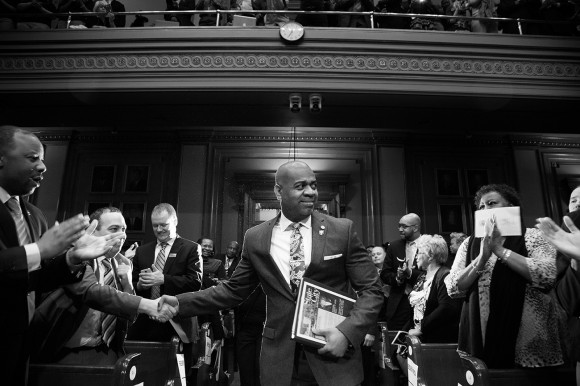
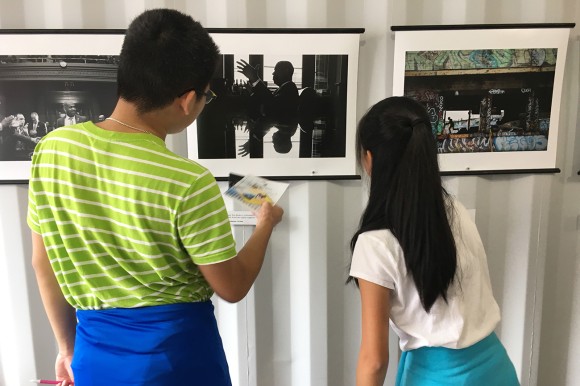


“Our stories emanate from the campus of Rutgers University in Newark, New Jersey, where the newest Americans from all over the world are acquiring a college education and social mobility,” Raphael explains in the first issue’s letter from the editor. “It is here in Newark that their stories converge with those of immigrant Jews and Catholics, Portuguese, Germans, Italians, and Irish, as well as African Americans who arrived as part of the Great Migration, the largest internal migration in American history. Newark has always been a crucible for the construction of new American identities. It is also the connective thread that ties these new immigrant journeys to the foundational story of American identity born of migration and transformation.”
Newest Americans is a collaboration between the city’s public university and private, professional media makers to tell Newark’s stories, Winokur explains. “We felt that we could pair up the expertise of faculty with professional media makers to explore ways to tell stories that might be groundbreaking.” Capitalizing on some of the existing archives at the university and in the city, the project translates stories of migration and immigration for larger, younger, and more diverse audiences: what Raphael calls “activating the archives.”
“For way too long, there has been a fetishization of archives as a really important and necessary thing for scholars to create, but very little attention has been paid to how you actually get those archives out into the hands of people in ways that are useful to them,” Raphael says. “They're largely the province of scholars. Our belief is that they are far too important to be left solely for the use and purpose of academic scholarship.”
The project’s work with the Krueger-Scott African-American Oral History Archive is illustrative.
“It's an archive of over 120 interviews with African American Newarkers who moved here during the Great Migration,” Raphael explains. “It's a project that started over 8 years ago, when a grad student of mine discovered microcasette tapes on the back shelf of the Newark public library with this remarkable collection of interviews no one had listened to since they were conducted. So we digitized, catalogued, and created a website for the interviews and began creating media from them: a series of short films, audio pieces, articles for journals, glass book sculptures, and two exhibits here in Newark.”
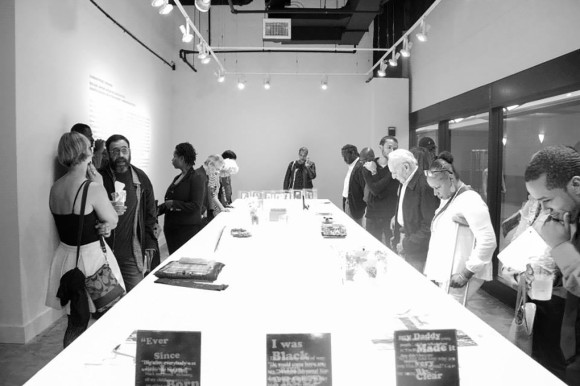

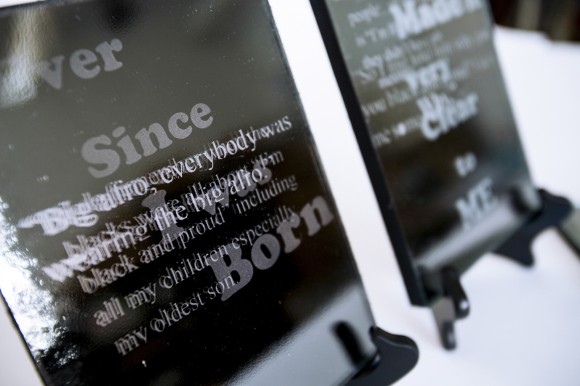
The work with the Krueger-Scott African-American Oral History Archive often involves students at Rutgers University-Newark. Newest Americans partnered with Newark artist Adrienne Wheeler and the founder of the ongoing GlassBooks Project, Nick Kline—a faculty member in Department of Arts, Culture and Media. In Kline’s Book Arts class, students were asked to engage with the archive. “Working with a selection of six narratives, Kline, Wheeler and the students created book sculptures made of glass, inspired by the remarkable life stories related by the narrators of the collection,” Samantha Boardman explains in the Summer 2015 issue of Newest Americans. “[The project] explores the effects of the seismic change the Great Migration brought to individuals, their families, the City of Newark and the country at large. The strength, fragility and weight of the glass personify the emotional impact of this massive historical event at the human level.” The books were displayed as part of a larger multimedia exhibition in the Gateway Gallery in Newark.
Students at Rutgers-Newark participate in this project through interdisciplinary coursework and student research.
“We were able to take advantage of our students here, who have experience which is both unique when you combine all different backgrounds of our students and that is also often lacking from scholarly studies of immigration,” Raphael says. “Since the beginning of the project we have had undergraduate and graduate fellows working on the project. We've been teaching classes and developing curricula around Newest Americans media. We've also been working with students to conduct research, identify stories, and create high-quality broadcast-quality media from the research.”
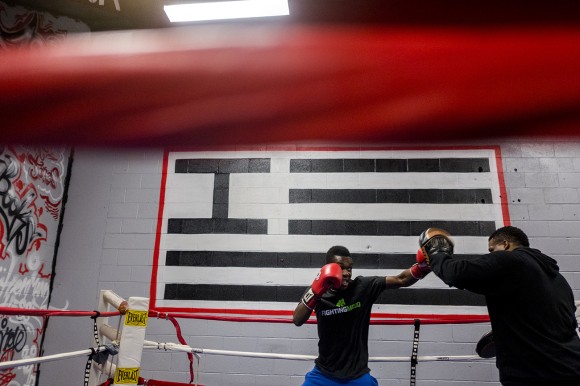
The project’s multimedia approach was by design, Winokur emphasizes, in order to find “fresh ways to tell stories.”
“We decided that to do that we wanted to free ourselves to be able to tell those stories through visual media, through film, photography, written text—we decided we would do fiction and nonfiction,” Winokur notes. “We didn't want to be beholden to any one discipline. We wanted to be able to play to the strengths of the story; the strengths of the collaborators that we were able to pull in on the project.” The online publication embodies this approach. “From the conception we knew that we wanted to do an online magazine that was going to be a platform for storytelling to capture all the materials we were generating,” Winokur continues. “We knew we wanted an online magazine as a living breathing document that is multimedia highly accessible to anybody that is interested.”
The project is ongoing on campus, in Newark, and online, where every issue is available on the project website.